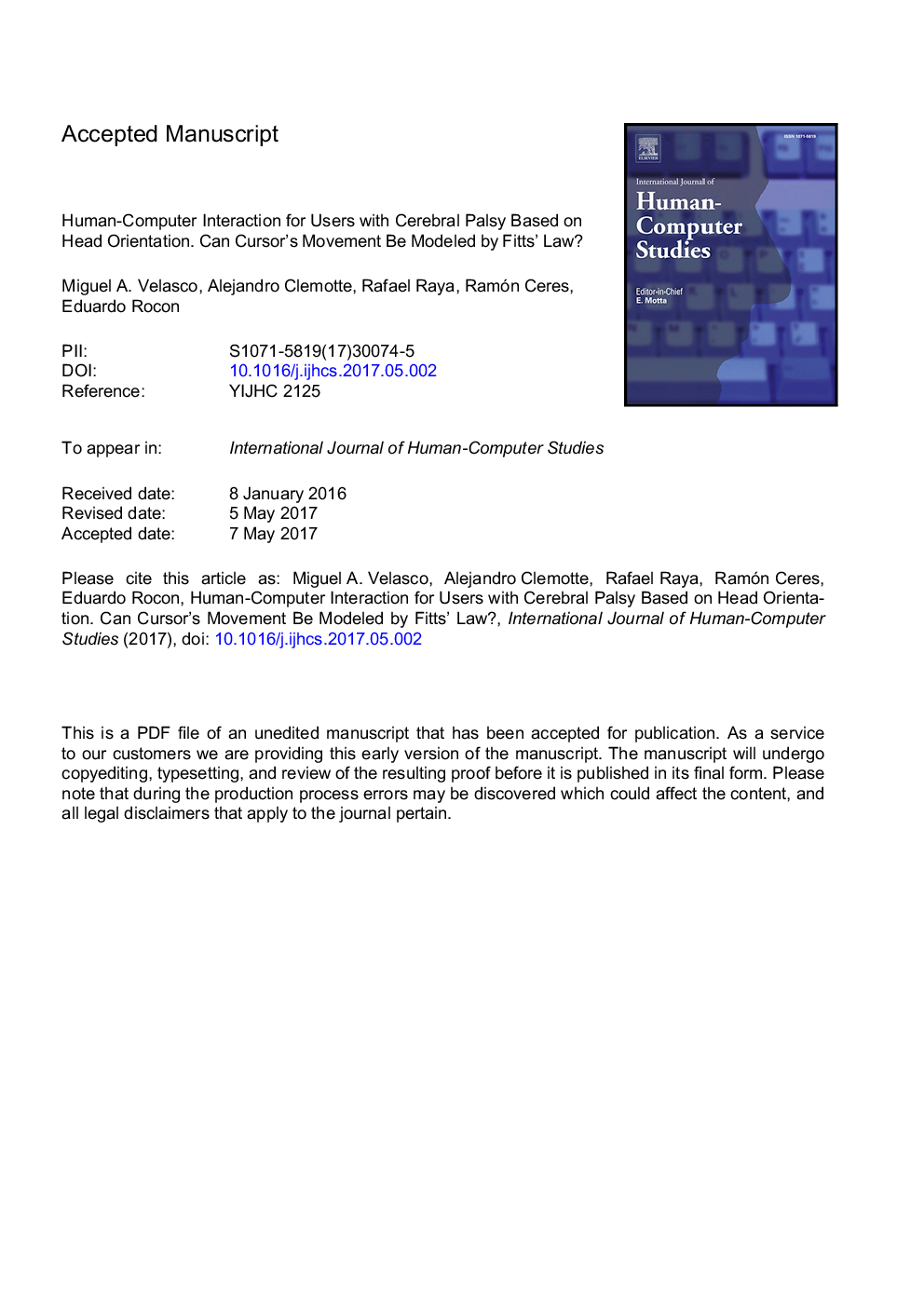| Article ID | Journal | Published Year | Pages | File Type |
|---|---|---|---|---|
| 4945787 | International Journal of Human-Computer Studies | 2017 | 43 Pages |
Abstract
This paper presents an experiment to validate a head-mounted inertial interface for human-computer interaction (HCI) developed for people with cerebral palsy (CP). The method is based on Fitts's law, an empirical model of human motor performance for aimed movements. Head motion is recorded in a series of goal-crossing tasks and a regression model of the movement time (MT) is estimated for each user. Values of R2 above 0.9 are indicators of a strong correlation of those motion patterns with the linear model proposed by Fitts. The analysis of MT confirmed that head movements of users without disability follow Fitts's law and showed that 3 users with CP (MACS IV and V) had the same behavior. There was a weaker correlation (R2=0.839) for one individual with cervical dystonia and ballistic movements and no correlation for two users with cervical hypotonia and dyskinetic CP. Results show the impact of ballistic movements and poor postural control in computer interaction. They also provide the foundation for new interaction techniques to develop a universal computer interface for motor impaired users.
Related Topics
Physical Sciences and Engineering
Computer Science
Artificial Intelligence
Authors
Miguel A. Velasco, Alejandro Clemotte, Rafael Raya, Ramón Ceres, Eduardo Rocon,
